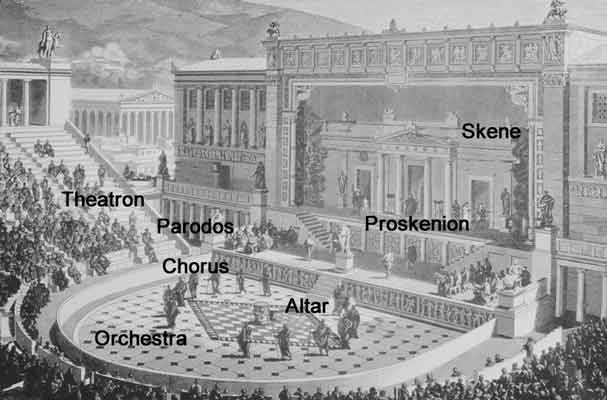.

In classical drama, the skene was the background building to which was connected the platform stage, in which were stored the costumes and to which the periaktoi (painted panels serving as the background) was connected.
The evolution of the actor, who assumed an individual part and answered to the chorus (the word for actor, hypokrites, means answerer), introduced into drama a new form, the alternation of acted scenes, or episodes. With this, there arose the need for a place where the soloist could retire between appearances and change costumes, as needed, and a place for the storing of various properties. The word skene means "tent" or "hut," and it is thought that the original building for this purpose was constructed of perishable material, such as wood, and was a temporary structure. The skene broke the circularity of design in the Greek theater. In the course of time, the skene underwent extensive alterations. At first it was a simple wooden structure; later it became a series of complex stone buildings (permanent) with such areas as the paraskenion, the proskenion, the hyposkenion, the episkenion with its thyromata, and the logeion.
Links
| Ancient Greece
Science, Technology , Medicine , Warfare, , Biographies , Life , Cities/Places/Maps , Arts , Literature , Philosophy ,Olympics, Mythology , History , Images Medieval Greece / Byzantine Empire Science, Technology, Arts, , Warfare , Literature, Biographies, Icons, History Modern Greece Cities, Islands, Regions, Fauna/Flora ,Biographies , History , Warfare, Science/Technology, Literature, Music , Arts , Film/Actors , Sport , Fashion --- |
All text is available under the terms of the GNU Free Documentation License

